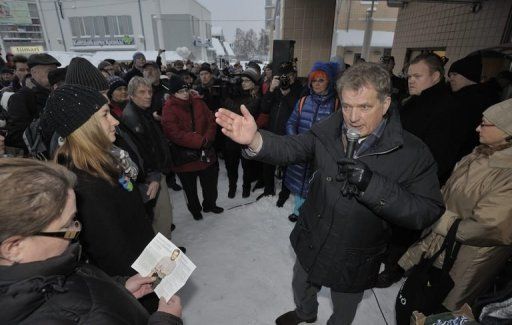
Euro-loving Finnish Green Party on the Rise, First round of voting begins in elections in Finland | Democracy, elections and voting at Democracy Chronicles
First round of voting begins to elect Finnish president: Elections in Finland
The presidential election was held in Finland in January and February. The first round took place on 22 January 2012 with advance voting on 11–17 January, and the second round occurred on 5 February with advance voting on 25–31 January. The elected candidate’s term began on 1 March 2012 and will last until 2018. The incumbent Tarja Halonen was ineligible for re-election, having served the maximum two terms.
Also: Pertti Pesonen, University of Helsinki, Finland
The Republic of Finland had nine presidents between 1919 and 1994. They were voted into office indirectly, the final decision being made by the popularly elected Electoral College (and in some exceptional cases by the Parliament). The French type of direct election method was used for the first time in 1994 when the successor to President Mauno Koivisto was designated.
The election days were 16 January and 6 February 1994, and on both occasions more than 43 percent of the voters rushed to the post offices to cast their ballots in advance. Both rounds of the election turned out to be exciting. However, the biggest surprise was the success of the woman candidate of the small Swedish People’s Party, Mrs Elisabeth Rehn, who unexpectedly came close to victory but was defeated at the last moment by the original favorite Mr Martti Ahtisaari, the Social Democratic Party candidate. Thus the tenth president of the Republic is again a he and not a she.
The results are summarized in Tables 1 and 2 and the crucial fact in Table 1 is that Rehn received more votes than the candidates of two of the three big parties, while the crucial fact in Table 2 is that Ahtisaari received more votes than Rehn.
There had been increasing demands during the 1980s for more power to the people and less to the political elite. One obvious undercurrent of the 1982 presidential election was the voters’ determination to prevent any unannounced “black horse” candidate from entering the votes to be cast by the members of the Electoral College. By the 1988 presidential election the political leaders had yielded somewhat and two simultaneous elections were held: a direct one and that of the Electoral College, the latter for the purpose of making the decision in the almost certain case that no candidate crossed the 50 percent mark. The next step then was the direct election on two rounds in 1994. A provision about consultative referendums was also added to the Constitution Act in 1987.
Leave a Reply